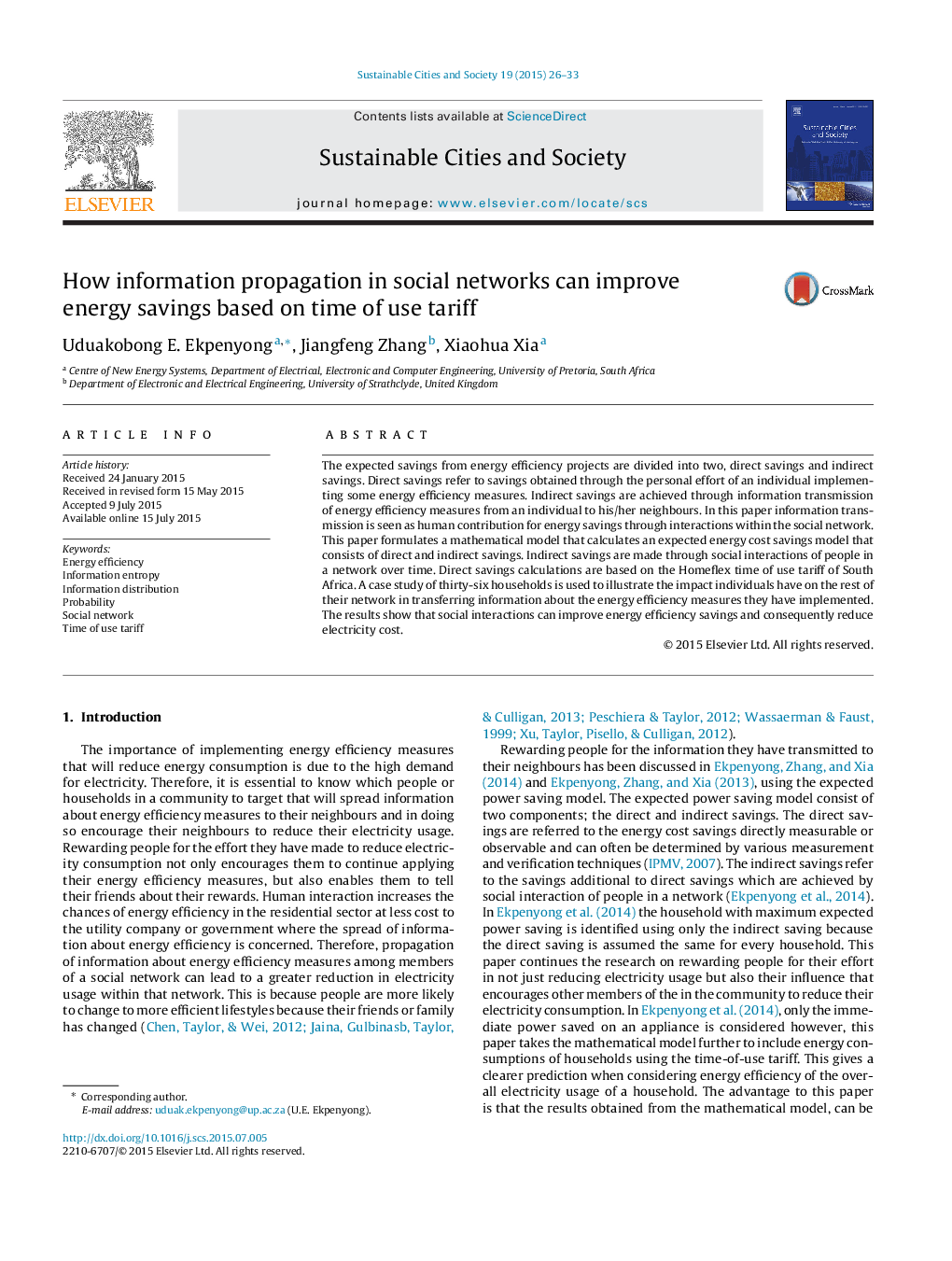| Article ID | Journal | Published Year | Pages | File Type |
|---|---|---|---|---|
| 6776160 | Sustainable Cities and Society | 2015 | 8 Pages |
Abstract
The expected savings from energy efficiency projects are divided into two, direct savings and indirect savings. Direct savings refer to savings obtained through the personal effort of an individual implementing some energy efficiency measures. Indirect savings are achieved through information transmission of energy efficiency measures from an individual to his/her neighbours. In this paper information transmission is seen as human contribution for energy savings through interactions within the social network. This paper formulates a mathematical model that calculates an expected energy cost savings model that consists of direct and indirect savings. Indirect savings are made through social interactions of people in a network over time. Direct savings calculations are based on the Homeflex time of use tariff of South Africa. A case study of thirty-six households is used to illustrate the impact individuals have on the rest of their network in transferring information about the energy efficiency measures they have implemented. The results show that social interactions can improve energy efficiency savings and consequently reduce electricity cost.
Keywords
Related Topics
Physical Sciences and Engineering
Energy
Renewable Energy, Sustainability and the Environment
Authors
Uduakobong E. Ekpenyong, Jiangfeng Zhang, Xiaohua Xia,
